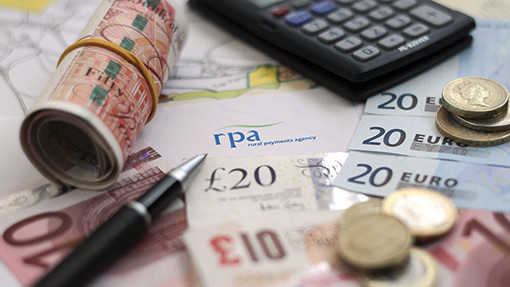How hedging helps maximise single farm payments

Since the single farm payment (SFP) was introduced in 2005, its value to UK farmers has varied wildly because it is calculated in euros (EUR) and the currency’s value against the pound (GBP) has fluctuated by about 25%, writes Jake French of ODA UK.
This means that since the introduction of the SFP in 2005, the sterling value of a €100,000 SFP payment has ranged from £67,770 to £90,930.
Those who choose to receive their SFP in sterling and take no action to protect its value are leaving their payment to chance. From the time of SFP application in May to the payment window between 1 December and 30 June, there may be large fluctuations in the relative values of the pound and euro.
 Jake French,
Jake French,ODA UK
Go to the Farmers Weekly Academy and take the Protecting SFP Values test now
Just 5% of UK farmers choose to take their payments in euros, so the vast majority are effectively leaving the value of their SFP to chance.
Choosing on the SP5 form to be paid in euros allows the claimant to look at currency values in the markets and fix an exchange rate to suit them using a spot or forward contract. This reduces risk in the business and allows accurate budgeting.
Risks and costs
There are other methods but it is important to understand the risks and costs, whatever route you choose. Those who take a euro payment can also take that income and then decide when to convert it into sterling.
When or how you hedge your SFP depends on your appetite for risk, but in general the advice is to keep it simple. Hedging is not about making money but protecting your bottom line against exchange rate fluctuations.
Whether you use a bank or a foreign exchange broker is up to you, but check what level of service applies to the offer, be clear when the settlement date is and how flexible the other party is about when the SFP cash comes in.
Questions to ask
- Are you getting a good rate compared with the interbank rate – unless you ask, they won’t tell you
- Are all costs and fees included in the rate offered?
- How flexible is your contract, especially on dates – are there penalties, for example if the SFP arrives late in the payment window?
- Is a deposit required – if so, how much?
- Are there likely to be margin calls if the currency moves against your position?
Banks and brokers make money by buying currency at one rate and selling it to you at another, with their margin being the difference. Get several rate quotes and compare how far these stray from the interbank rate – the rate at which banks buy and sell foreign currencies from and to each other – at the time you are being quoted.
Banks and hedging
Most farmers use their bank for hedging because they have overdraft or loan facilities there, they want to keep the bank manager happy and think that booking foreign exchange through a broker will affect that relationship. But this should not be the case.
If you use a bank you will need a euro bank account – if you don’t already have one, there may be fees and set-up charges. If you use a broker, the Rural Payments Agency can forward your payment to its euro client account for conversion or it can be paid directly to your own euro account.
Banks and brokers offer different levels of service so it is important to understand what the arrangement is and how much attention you will have to pay to your hedging account. In general, it is suggested that only SFP payments of €50,000 or more justify a hedging operation.
